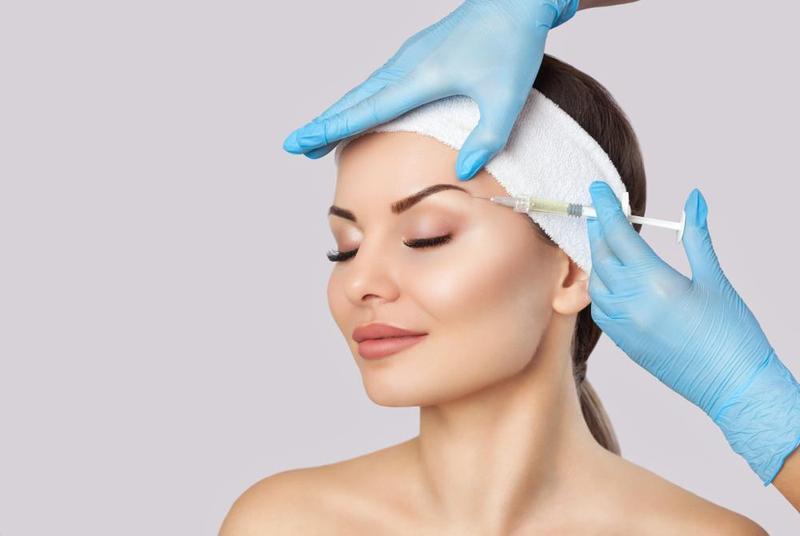Facelift: Identity and attractiveness reconstruction
Facelift: Identity and attractiveness reconstruction
THE CURRENT STATE OF THE ART
All facial rejuvenation procedures, whether medical or surgical, aim to give the impression that the patient is younger rather than actually making the patient younger. This is the plain truth.
Our treatments aim to modify age perception codes in this respect. This requires a fair and artistic analysis of the patient’s face, always divided into two phases:
- Analyzing which facial zones seem young and should not be touched so as not to damage them
- Analyzing which areas give an impression of age and, consequently, deciding which procedures are better suited, whether medical, surgical or mixed
New therapeutic and non-invasive approaches have proved efficient. Therefore, surgery is no longer the prevailing procedure, having almost been blocklisted.
Industry seized the opportunity to launch an aggressive (and successful) marketing campaign over the past ten years based on various topics:
- No more surgery and its brutal, bloody, painful, and dangerous overtones, with clichéd results.
- Non-surgeons are encouraged to practice on the same level as surgeons.
- Lastly, smooth, natural, and seamless results and no seclusion period.
No patient can resist such arguments, at least not at first! Is surgery out of fashion? Absolutely not! But it benefits from a better-defined scope of indications. The overwhelming emergence of rejuvenating medical treatments has caused surgery to evolve both in terms of technique and indications. The therapeutic tools allow us to provide better care as well as better and more seamless treatments. Thanks to the combination of medical and surgical treatments, results are optimized, more harmonious, and, therefore, more “natural-looking.”
The emergence of such a broad range of therapeutic options (fillers, myorelaxation toxins, and chemical or energy surface treatments) has caused a significant evolution in care regimens:
- Facial rejuvenation is not just the prerogative of surgery anymore (a perfect result not being achievable via surgery only).
- Mutilating procedures such as the forehead lift and aggressive eyelid surgeries have almost entirely vanished from surgical programs. Now they are only carried out in very specific cases.
- Surgical procedures are increasingly carried out in instances where only surgery may correct the problem.
The current trend is to use surgery for the lower part of the face (neck, jowls), where it is still indispensable, and to treat the central part using medical treatments.
A better understanding of facial aging, combined with new therapeutic tools, has given us a more enthusiastic and positive outlook. Consequently, we are able to achieve results of unquestionably high quality.
Still, surgery remains mysterious, unpredictable, and even philosophically challenging at times; this, however, is a different, though essential, matter.
PATIENT’S APPEARANCE
Plastic surgery specialty (both medical and artistic) is very challenging, not to say impossible to carry out.
Indeed, the task is to turn our patients’ unwanted appearance into their expected appearance!
What defines an unwanted appearance? Who is it unwanted by, and why?
What defines one’s expected appearance? The appreciation of one’s new image depends on too many subjective factors to be guaranteed. Only a fortunate set of circumstances may lead to the perfect expected result. In order to maximize our chances of success, we must improve our odds.
The only underlying objective behind any cosmetic surgery-related decision is to make the patient happier once the procedure is done. The objective technical quality of the result is entirely different from its emotional quality, especially from the point of view of the patient’s feelings. Satisfaction depends on many factors and, more specifically, on three key aspects:
- Satisfaction derived from well carried out work of good quality: this is the material result, which depends on the surgeon’s technical skills.
- Satisfaction brought about by positive changes that can be enjoyed in one’s daily life on a personal, professional, and emotional level after surgery. This is successful identity reconstruction and depends on the surgeon’s artistic and psychological skills.
- And lastly, whether one likes it or not, a good return on investment, these procedures being costly and closer to an investment.
Improving one’s appearance in order to improve one’s well-being is a notion that many psychiatrists and psychologists would laugh at. Identity reconstruction to enhance one’s standard of living is a process that entails several other reconstruction steps. It is crucial to schedule the surgery at the right time. Age-related reconstruction is more controversial; aging is an unavoidable process, yet people secretly dream of turning back the hands of time, whereas the procedure only really aims to create an illusion! In such a specific context, it is essential to distinguish between quests for eternal youth (negative requests) and desire for mild reconstruction in order to harmonize well-being and appearance (positive requests).
The secret of well-being lies in the balance of being and appearing. Such balance is fundamental to charm, power, and charisma.
Charisma is a mysterious attribute that evokes the fascination of others; it has nothing to do with age or beauty!
This much sought-after natural virtue is often requested by patients. A strong identity is an essential component of charisma. No treatment can be performed that may affect a patient’s charisma.
In a nutshell, we aim to rebuild people’s identities. The purpose of surgical procedures is construction or reconstruction.
Lastly, we must never forget that emotional quality always outweighs technical quality.
Be the first to post a message!
